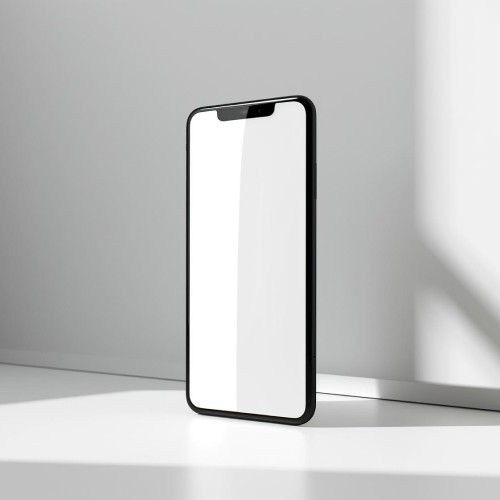Logoipsum Mobile App
An intuitive, mobile-friendly design for an iPhone app focused on enhancing user productivity through sleek interfaces and seamless interactions.

Background
At ev.energy, we incentivise EV drivers to charge at off-peak times, participate in grid events, and shift energy usage patterns, making the grid greener and more reliable. These rewards are paid out as part of utility-sponsored incentive programs.
Incentives are a key behavioural lever. But we faced a major issue:
🚩 Users didn’t trust that their rewards would be paid.
🚩 Too many support tickets, unclear statuses, and a poor experience.
Problem discovery
I first flagged this during a monthly CS data review. We saw that payout-related support tickets spiked by 35%, despite no technical regressions. So I dug into the root cause.
I reviewed:
🔍 40+ anonymised user tickets
🎯 Internal payout logic in the Rewards admin panel
📱 Mobile app UI (which displayed poor experience)
Patterns emerged quickly:
There was no indication that their payout had even been attempted
Many didn’t know what action (if any) they needed to take
At the same time, our commercial team shared concerns from utility partners who were worried about payout transparency impacting program credibility.
Objective
How might we create a payout status system that:
Builds user trust with transparent communication
Reduces CS load
Supports different incentive program structures (monthly vs real-time payouts)
User insight and segmentation
To prioritise this, I worked with CS and data teams to segment affected users:
🧠 High-participation users (e.g. those in smart charging programs with ≥3 events/month)
🌍 US-based users with standard payout channels
🧾 New program enrollees - most prone to payout anxiety due to unfamiliarity
These users weren’t just casual app users, they were our most valuable contributors to grid flexibility. Keeping them engaged and confident was essential for retention and ongoing energy savings.
Metrics we aimed to move
CS tickets about payouts 272/month↓ 30%
Mixed↑ Support cost per payout
Net retention of high-value users
My role
I led the design work end to end—working across research, UX writing, systems design, and delivery:
Defined UX and communication requirements
Led mapping of technical payout states to user-friendly statuses
Designed UI patterns for payout visibility, CTAs, and explanations
Aligned across product, engineering, support, and Braze (for comms)
Design challenges
1. Mapping complex system logic into user-friendly language
We had 7+ payout states in the backend with subtle technical differences. But users don’t care about API errors—they care about “Did I get my money?”
I worked with CS and content teams to:
Translate technical states into simple user-facing labels
Add plain-language explanations and human tone
Show actionable CTAs where relevant
RETRYING
User label: “We tried to send your payout”
Description: You may need to confirm your PayPal/Venmo details
CTA: “Confirm details”
ONHOLD
User label: “Your payout is on hold”
Description: Contact PayPal to verify your account
CTA: — (no CTA shown)
SUCCESS
User label: “Your payout was sent”
Description: Reassuring message with date of payment
CTA: — (informational only)
2. Scalability across different incentive programs
Some programs pay monthly, others pay in near real-time. I worked with engineers to ensure:
The system could support both fixed and rolling payout dates
The same design could be reused across multiple incentive structures
Labels remained agnostic to local program terminology or payout cadence
We also worked with localisation to future-proof translations—ensuring phrasing like “Your payout is on hold” would make sense in multiple languages.
3. Designing an extensible component
I created a flexible component using our design system that could support:
Status icon + label
Dynamic helper text (with or without CTA)
Dates (either estimated payout or actual sent date)
Optional action buttons (e.g. Confirm account)
This worked across:
📱 Native apps (iOS/Android)
💻 Web portal
🔧 Admin views (for internal team visibility)
Validation
To validate tone and usability:
I tested 5 copy variations with support agents to identify most effective and least ambiguous wording
I ran a quick unmoderated test with real users via Maze to test label comprehension (90%+ selected the correct meanings)
I cross-checked with legal/comms to ensure payout messaging stayed compliant
Outcome
Results of 4 weeks after the launch:
✅ 34% reduction in CS tickets related to payout issues
✅ +14% increase in successful claims from eligible users
✅ +18% CSAT improvement in “earned reward” journeys
✅ Reduced resolution time per payout-related ticket by ~2 minutes
One CS agent shared:
“It’s a huge relief to be able to say: ‘You can check that in the app now.’ Before, we had to explain every edge case.”
Business impact
🎯 Helped strengthen retention in our highest-paying utility programs
🔁 Created a repeatable pattern for future rewards (carbon credits, CO2 offsetting, etc.)
🧱 Reduced operational friction during seasonal high-volume payout periods
🌍 Positioned us better for international expansion by localising status logic from the start
What I learned
Even a simple UI message can drive or destroy trust. By treating payout messaging like a product—not an afterthought—we turned a frustrating experience into one that builds confidence and transparency.
More broadly, I learned how to:
Balance technical constraints with user needs
Lead systems thinking across regions, programs, and platforms
Align multiple departments (product, engineering, CS, comms) around a shared user-centric goal
What’s next
📲 Push notifications for payout events (in development)
📅 Monthly earnings summary email
🧾 Combined rewards + incentives tab to simplify navigation

